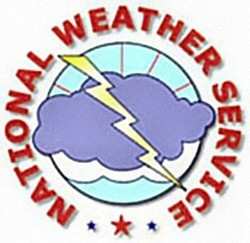Computing Power Increased To One-Thousand-Trillion Calculations Per Second
In less than a year, U.S. aviation weather forecasts could start improving significantly. In two or three years, today’s preflight weather planning products may be remembered as inefficient or sluggish.

The more timely, specific forecasts will be made possible by a more than 10-fold increase in National Weather Service (NWS) computing power, from today’s 80 teraflops (80 trillion calculations per second) to well over 1,000 teraflops. By comparison, a state-of-the-art desktop computer clocks about 0.01 teraflops.
“The supercomputer transition is already well underway,” said Bob Maxson, a former hurricane-hunting pilot on the weather service’s Gulfstream airplanes, and now director of the Aviation Weather Center in Kansas City, MO. “This huge increase in computing power will be revolutionary in predicting critical nuances of aviation weather vital to pilots and other aviation users.”
The upgrades will be installed in stages between now and 2015.
Thunderstorm forecasts will see the first improvements. Rather than describing the likelihood of convective activity in a general area, forecasts will name specific locations where thunderstorms will form, provide a realistic prediction where holes may be in lines of thunderstorms that haven’t yet formed, heights the storms will attain and more. Such warnings will be available before pilots reach that airspace.
“Speed is where our new computing power will show its strength for aviation users,” said Bruce Carmichael, director of the Aviation Applications Program at the National Center for Atmospheric Research and chair of the Weather Working Group of NBAA’s Access Committee. “It’s best for the short-term forecasts aviation users want.”

Aviation weather forecasts are based on grids of weather data that currently measure 13 kilometers (about 8 statute miles) square, with vertical resolutions of around 2,000 feet, at least close to the ground. Each atmospheric grid “chunk” has four dimensions: height, depth, width and time.
“Years ago, we could analyze only very large horizontal grids of atmosphere perhaps 160 kilometers (100 statute miles) square, with maybe only a dozen vertical sections,” Carmichael said. “That’s a very coarse net, so you only catch the biggest fish, or weather phenomena. If you want to catch smaller fish, you have to use a smaller mesh, and for really small fish, you have to use a very fine mesh net.”
The coming aviation weather forecasts will be using the very fine net. A recent program called the High Resolution Rapid Refresh model uses a 3 kilometer-square grid (about 2 statute miles) range and will eventually reach a size of just 1 kilometer, or 0.6 of a statute mile.
For each grid chunk the computer applies all known physical processes including air motion, how water changes state, how the air interacts with the ground and ocean and more. Better forecasts come from smaller chunks, but more chunks increase exponentially the number of calculations required, and the current 80 teraflops of the NWS computer system aren’t sufficient.
The upgrades are the result of congressional concern that European weather models quickly and correctly predicted Hurricane Sandy’s unusual westward turn last October while NWS computers were still grinding away. Congress set aside $25 million for computer upgrades as part of an overall $309.7 million NOAA appropriation for other Sandy-related forecasting improvements such as improved ocean observing and coastal monitoring.
“Even in times of thin budgets, Congress has recognized the importance of providing tools for producing excellent weather forecasts for every citizen of this country,” said Maxson.
 ANN's Daily Aero-Linx (04.16.24)
ANN's Daily Aero-Linx (04.16.24) Aero-News: Quote of the Day (04.16.24)
Aero-News: Quote of the Day (04.16.24) Airborne 04.10.24: SnF24!, A50 Heritage Reveal, HeliCycle!, Montaer MC-01
Airborne 04.10.24: SnF24!, A50 Heritage Reveal, HeliCycle!, Montaer MC-01 Airborne 04.12.24: SnF24!, G100UL Is Here, Holy Micro, Plane Tags
Airborne 04.12.24: SnF24!, G100UL Is Here, Holy Micro, Plane Tags Airborne-Flight Training 04.17.24: Feds Need Controllers, Spirit Delay, Redbird
Airborne-Flight Training 04.17.24: Feds Need Controllers, Spirit Delay, Redbird




